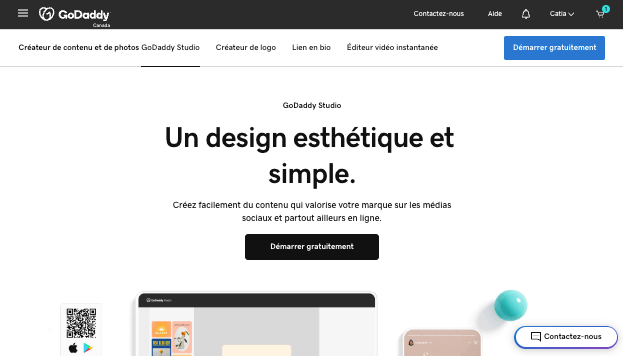Before you press one button, purchase hosting or even get that domain name, create a plan. The more thought you put into your plan the more easily your business website will come together.If users have a satisfying experience using your website they are more likely to return. Prospective customers will probably visit your website several times before contacting you. If the website frustrates them, the probability that they will return is slim.
A tip to consider when you want to build a website for your company:
Have a purpose.
Here are some questions to keep in mind:
- Do you want to showcase your portfolio?
- Do you have products to sell?
- Are you a service-provider interested in demonstrating what makes you different from other service-providers in your industry?
- Do you want your users to call you?
- Sign up for your email newsletter?
- Purchase your products?
Figure out the main purpose of your website and make that the primary showcase of your site. You may have some secondary goals for your site but they shouldn’t distract from the main goal.
Content! content! content!
Prepare your content first. I’ll say it again: prepare your content first. This not only makes developing your website so much easier but it also considers your customers. You will be able to display your content in a much more accessible and approachable manner if you do so. Your content should be useful to your user, not just there for the sake of taking up space. Break it down.
Unless your business is about supplying high amounts of information, like an educational institution or a medical website, most small business websites don’t need to have long essays. Your audience won’t have the time or interest in reading them. People scan online resources; they don’t read line per line unless their original scan piques their interest. Have your content in small, digestible chunks highlighting key points at the beginning of each paragraph.
There are many articles on writing great web content. I’ll let you research this, but do take the time to create engaging quality content that your users will appreciate. It will build your brand, make your search engine optimization strategy easier to develop, and increase your authority, resulting in loyal customers who know what to expect from you.
Get that brand working for you
Hopefully, as a smart, savvy business owner you already have your brand strategy worked out, and now it’s about developing a design that supports your brand promise and persona. If not, put building your website on pause and develop your branding strategy.
Everything the public is involved with, whether it is an experience or a visual identity piece, is part of your brand. This includes your small business website. If your brand is fun, approachable and you’re trying to attract an “artsy, creative crowd” it is better to have a website that supports that narrative.
Consider hiring a designer to build a design that supports your brand. If you decide to do it yourself, keep in mind that your brand is about your promise to your customers; it is not about you. Each color, font, image, and layout should be designed to support your brand persona, promise and attract your prospective target audience. If you like pink roses, that’s great. Put a pretty picture of one in your office. But your personal preferences should not be your brand identity. Your brand should explain what benefit you can give to your clients: it’s about them, not you.
Make it useable
For goodness sake, make it useable! Next time you’re out in your neighborhood, look at how many people use their mobile phones. Restaurants and coffee houses are filled with business people staring at their phones during the day.
If you’re a parent, you are well acquainted with waiting for your children to be dismissed from school/soccer/dance or whatever activities they’re in and the line of parents all staring at their phones. My point is that people are using their phones all the time. You don’t just need to make your website mobile-responsive and call it a day. You need to make it a breeze to use.
Make that transaction for XYZ product so easy and painless that your user is more likely to come back. If your website isn’t mobile-responsive AND useable to the mobile user then you’re losing the majority of your audience. Consider some other pointers to make your website more usable and make navigation simpler. How does the menu operate? Does it unravel secondary navigation menus? Consider chopping it down for your mobile users. Information should be displayed in a logical manner. Have co-workers, friends etc. try to find information on your website. Test it. What are their stumbling blocks? Don’t tell them where to go on your site. You won’t be coaching your clients when they are navigating your site. Replicate their experience as much as possible. Marketing research has found that users who are happy with their experience on your mobile-friendly website are more likely to be loyal to your brand.
When you’re ready to begin, everything you need can be found at GoDaddy.ca.






